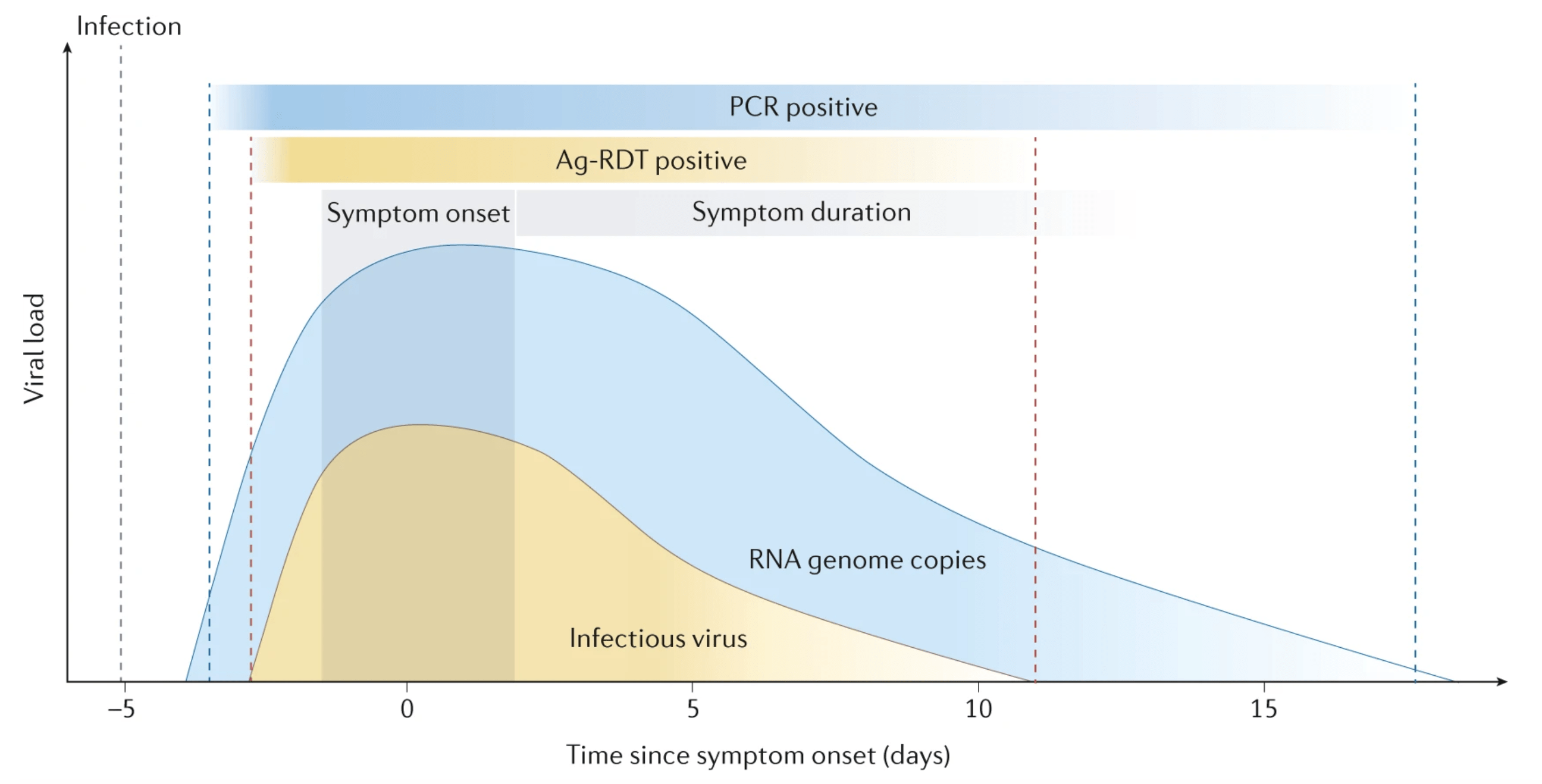

FULL CLAIM: “MSM Silent As Court Holds PCR Covid Tests 97% Inaccurate - Unfit for Purpose”
REVIEW
Instagram posts claiming “Court Holds PCR Covid Tests 97% Inaccurate” began appearing at the end of May 2024. These posts, published by accounts with tens of thousands of followers (see examples here, here, and here), contained a screenshot of an article on the website Hal Turner Radio Show. The website has a record of publishing inaccurate information and conspiracy theories. Its owner Hal Turner was convicted in 2010 for threatening to assault and murder federal judges over handgun bans.
The article’s appearance in May 2024 belies the fact that this claim dates back to November 2020. In fact, much of the article was lifted from a November 2020 op-ed published by RT (formerly Russia Today), a media outlet controlled by the Russian government and known to spread disinformation. Science Feedback debunked similar claims in 2020 and 2021 (see reviews here, here, and here).
The claim is based on a ruling by Lisbon’s Court of Appeals regarding a case for habeas corpus, brought by a group of four German holidaymakers. The Regional Health Authority for the Azores required the group to isolate and quarantine after one of them received a positive COVID-19 PCR test result. This took place in August 2020 and was in line with Portugal’s COVID-19 policies at that time.
The court ultimately ruled that the group’s confinement was illegal and ordered the four to be released. This decision was based in part on the court’s assessment of the reliability of PCR tests. According to a report by The Portugal News, the judges concluded that “the probability of a person receiving a false positive [from a PCR test] is 97% or higher”, citing the following statement from Jaafar at al. in a letter to the editor of the journal Clinical Infectious Diseases[1]:
“at a cycle threshold (ct) of 25, about 70% of samples remained positive in cell culture (i.e. were infectious); at a ct of 30, 20% of samples remained positive; at a ct of 35, 3% of samples remained positive; and at a ct above 35, no sample remained positive (infectious) in cell culture”
The judges spelled out their interpretation of this statement in their decision. The decision was primarily published in Portuguese, but it provided an English translation for the judges’ understanding of the letter by Jaafar and colleagues:
“This means that if a person gets a ‘positive’ PCR test result at a cycle threshold of 35 or higher (as applied in most US labs and many European labs), the chance that the person is infectious is less than 3%. The chance that the person received a “false positive” result is 97% or higher.”
However, this is a misinterpretation of the scientists’ findings, as we’ll explain below.
The letter by Jaafar et al. didn’t find that COVID-19 PCR tests are “97% inaccurate”
In brief, the letter by Jaafar and colleagues dealt with the question of how well positive PCR tests correlate with a person’s contagiousness.
PCR tests are considered the gold standard for COVID-19 testing[2,3]. As such, they form the basis of public health responses like isolation and quarantine. On a broader scale, they can inform school and business closures, as well as travel restrictions.
However, one potential issue—as this New York Times report highlighted—is that while contagiousness is a reason for isolation, a positive PCR result in itself may not necessarily mean a person is contagious. PCR tests are highly sensitive, which means they can detect even trace amounts of viral genetic material. This material can remain in the body for some time after the initial infection has passed and a person is no longer contagious.
In short, this means that infected people who are no longer contagious may isolate themselves unnecessarily if they still test positive (see Figure 1 below for an illustration).

Figure 1 – How viral load evolves as disease progresses, and the implications for the accuracy of diagnostic tests like PCR and antigen tests. Source: Puhach et al.[3]
PCR tests detect the presence of the virus by making—or in scientific parlance, amplifying—copies of a small part of the virus’ genetic material. The number of times the genetic material needs to be amplified (amplification cycles) to reach the threshold for a positive result is called the cycle threshold (Ct) value. The Ct value depends on how much virus is present in a sample. The more virus, the fewer the amplification cycles needed to reach the threshold for a positive result (low Ct value).
For that reason, some scientists suggest that Ct values should also be considered when determining the need for isolation, rather than rely solely on a positive or negative result. A high viral load (low Ct value) indicates that a person is likely infectious and needs to isolate.
But this approach also comes with caveats: interpreting a low viral load (high Ct value) is more difficult. It might indicate that a person is recovering and is no longer infectious. But it could also mean a person is still in the early stages of infection and will shortly become infectious (see Figure 1 above for an illustration).
To address the question of how well Ct values from PCR tests indicate contagiousness, Jaafar and colleagues collected the Ct values of approximately 3,000 PCR tests and checked whether the same samples contained live virus by using viral cultures. Viral cultures involve growing the virus, hence they can detect live, replicating virus and therefore provide a proxy measure for contagiousness.
The researchers reported that positive PCR results with a Ct of 25 were associated with up to 70% of positive viral culture results. But when they looked at positive PCR results with a Ct value of 30, the proportion of positive viral culture results fell to 20%. At a Ct of 35, fewer than 3% of cultures were positive.
This finding, which was cited as part of the basis for the Lisbon court ruling and for Turner’s claim, doesn’t mean that PCR tests are “97% inaccurate”. What it means is that the smaller the amount of viral genetic material in a sample (and the higher the Ct), the smaller the chance that live virus—a marker of contagiousness—is present.
It also doesn’t mean that PCR tests have a 97% chance of producing false positives. A false-positive result occurs when the test is positive in the absence of viral genetic material. The letter, on the other hand, explored the issue of trace amounts of viral material that are detectable by PCR tests and is unrelated to the problem of false positives.
In this blog post, virologist Ian Mackay explained that “A positive RT-PCR result doesn’t prove that replicating (also called infectious or viable) virus is present. It proves that its genetic material – the RNA – is present”. But since RNA breaks down easily, the presence of viral RNA in biological samples indicates that the source of that RNA—the virus—is likely present in the body. Therefore, PCR tests can still serve “as a surrogate indicator of the presence of the infectious virus”.
While viral cultures are an alternative to PCR tests for detecting live virus, they are slower and more expensive, Mackay explained. Hence viral cultures aren’t as widely used as PCR tests for detecting COVID-19 cases.
Vasco Bareto, a principal investigator at the Chronic Diseases Research Center of the NOVA University Lisbon, told Portuguese daily Público that the judges interpreted the results from Jaafar et al. incorrectly. “PCR tests have a specificity and sensitivity greater than 95%. That is, in the overwhelming majority of cases they detect the virus that causes Covid-19,” he said.
Conclusion
In conclusion, a Portuguese court’s conclusion that PCR tests are “97% inaccurate” is based on misinterpreted findings. The letter by Jaafar and colleagues didn’t report that PCR tests have a 97% chance of producing false-positive results. Instead, their findings suggest that positive PCR results at high Ct values—indicating very little viral genetic material—may be a sign that a person likely isn’t contagious.
REFERENCES
- 1 – Jaafar et al. (2021) Correlation Between 3790 Quantitative Polymerase Chain Reaction–Positives Samples and Positive Cell Cultures, Including 1941 Severe Acute Respiratory Syndrome Coronavirus 2 Isolates. Clinical Infectious Diseases.
- 2 – Peeling et al. (2022) Diagnostics for COVID-19: moving from pandemic response to control. The Lancet.
- 3 – Puhach et al. (2022) SARS-CoV-2 viral load and shedding kinetics. Nature Reviews Microbiology.


